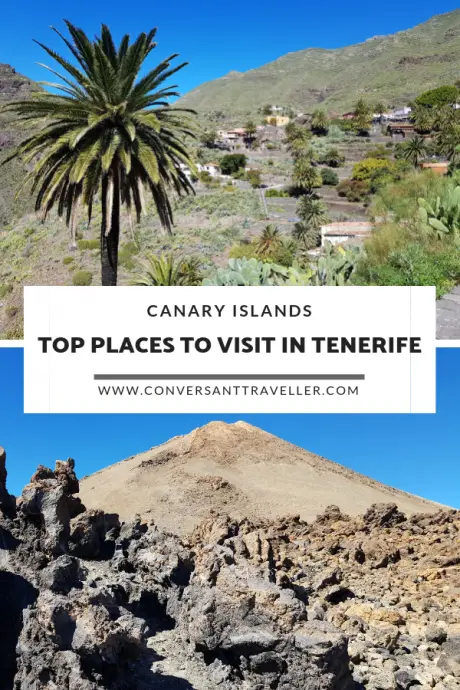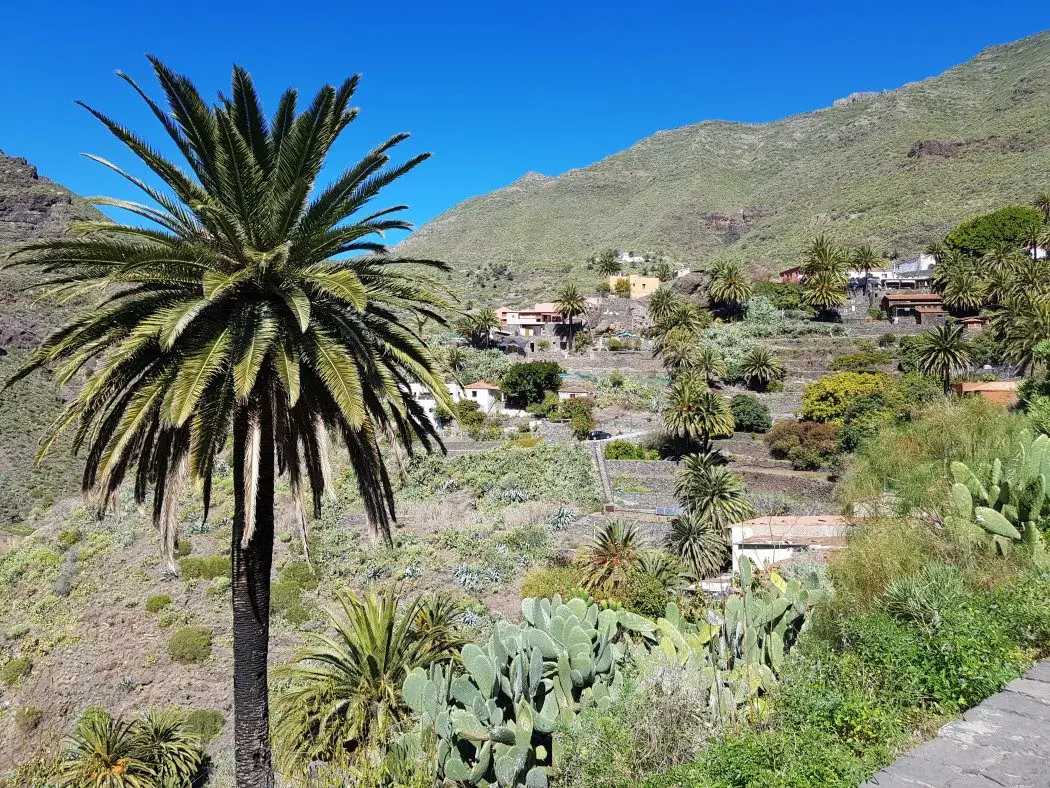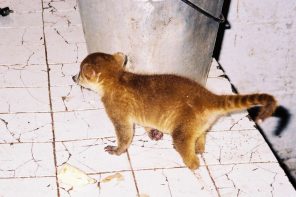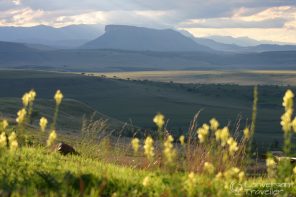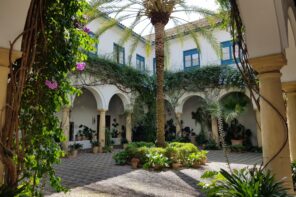Tenerife is an incredible island. It’s so much more than just a popular beach resort destination, and away from the coast there’s a strange and wonderful world waiting to be explored. In some ways it felt Jurassic, with ancient volcanic craters, lush tropical forests and hair-raising mountain roads. There’s a whole host of things to do in Tenerife beyond the beaches, from scaling volcanoes and hiking through lava, to wandering through colourful colonial towns and admiring the palm-tree clad slopes of precipitous villages. If you want to spend more time on this beautiful island, you can decide to buy a house with the help of a local lawyer and spend more vacations exploring Tenerife.
We were in Tenerife with Jet2holidays, who had challenged us to see if we could use a package holiday as independent travellers (read all about our verdict here). Whilst it didn’t quite go to plan, thanks to our passports being stolen and the subsequent hassle of sorting out emergency travel documents and filing police reports, we still had an amazing couple of days exploring the island.
It’s quite cheap to hire a car in Tenerife (from about €38 per day), so that’s precisely what we did. If you’re thinking of doing the same (it’s really the best way to see the island), we recommend you get one with a decent engine size if you’re heading to the mountains and contending with hairpins!
Here’s what we got up to in just two days…
Teide National Park
This place just blew our minds. It’s like stepping back in time, and walking amongst the lava and steam vents we half expected a dinosaur to come trundling by. Teide is arid, desolate and completely and utterly silent with no living creatures anywhere to be seen, making it a little eerie. We felt like we were on Mars.
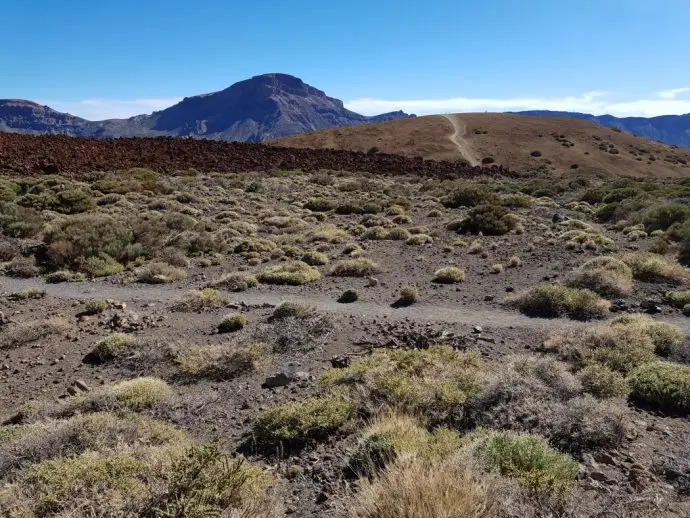
Teide National Park is a UNSECO World Heritage Site, and the oldest and largest park in the Canary Islands, covering an area of 190 km². It’s huge! Driving through it should be top of your list of things to do in Tenerife, the scenery is so spectacular you just have to keep stopping in all the handy laybys to take photos and gawp. It’s truly like nothing we’ve ever seen before.
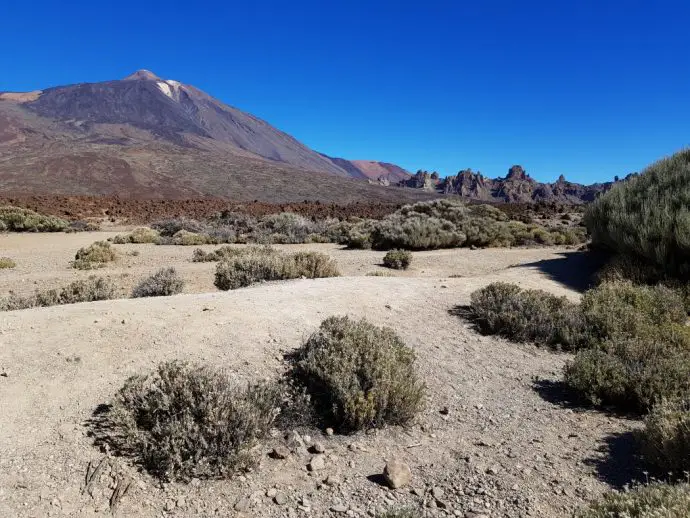
Despite the sun, it does get cold in Teide, so if you go, take plenty of warm clothing with you. In winter the park can be covered in snow, whilst in the summer temperatures regularly exceed 40°C, although thanks to the altitude it can feel chilly at any time of year. We were here in February and just about got away with t-shirts down in the valleys.
Read More: Dispelling the myths of a package holiday
Going up Mount Teide
Most people make a bee-line for Mount Teide, which at 3718m is Spain’s highest peak, and the third highest volcano in the world. It was formed 170,000 years ago after a massive volcanic edifice collapsed, and the ‘Guanches’ (Canarian Aboriginals) believed that ‘Guayota’, the King of Evil, lived inside. We could see why, it’s quite an imposing and ominous place, with Mount Teide rising imperiously out of a volcanic crater that is 30 miles in circumference. It’s effectively a volcano within a volcano.
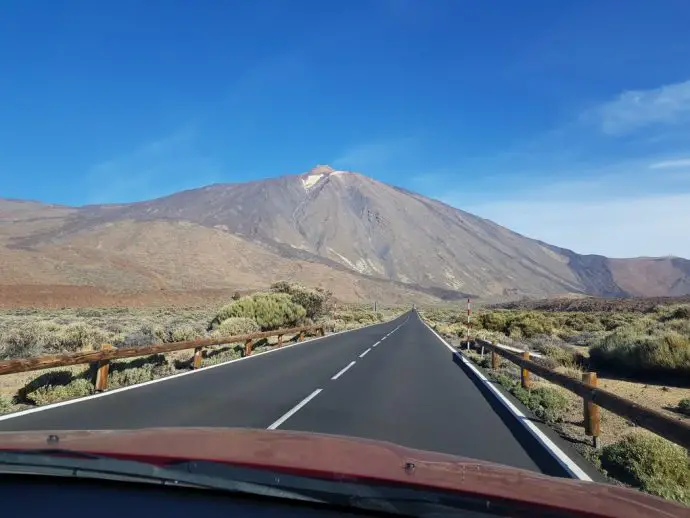
Did you know that Mount Teide is an active volcano, but hasn’t erupted since 1909?
We decided to take the cable car up rather than hike, due to time restraints, the intense heat, and having a few ounces of sanity. It’s best to pre-book cable car tickets online so you don’t have to queue for ages at the bottom. Return tickets cost €27, or you can buy a single and walk down (just make sure you take plenty of water and have appropriate footwear!).
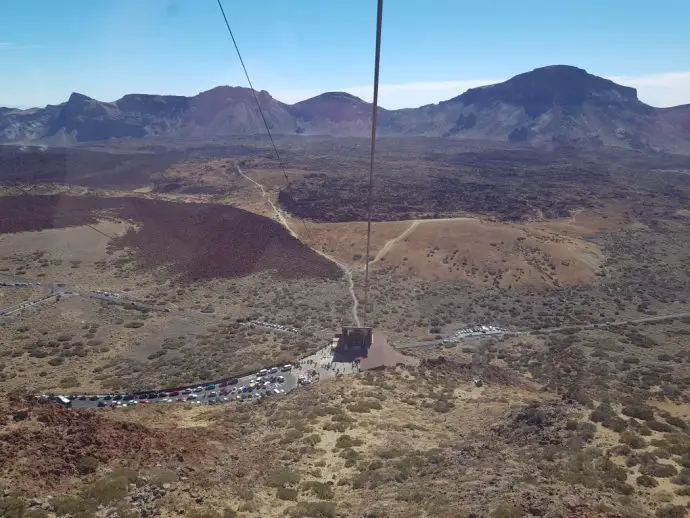
As always, it’s recommended that you go up early in the morning, or later in the afternoon to avoid the crowds, but we ignored that and went up at lunch time (we wanted a lie in on our first morning!), and didn’t find it crowded at the top at all. The only problem was the parking. There’s a car park at the cable car station for about 200 vehicles, but unless you’re there early you’ll be lucky to find a space. We ended up having to park in one of the laybys on the road below and walk up, so make sure you leave plenty of time before your allocated ascent slot to allow for a bit of parking faff.
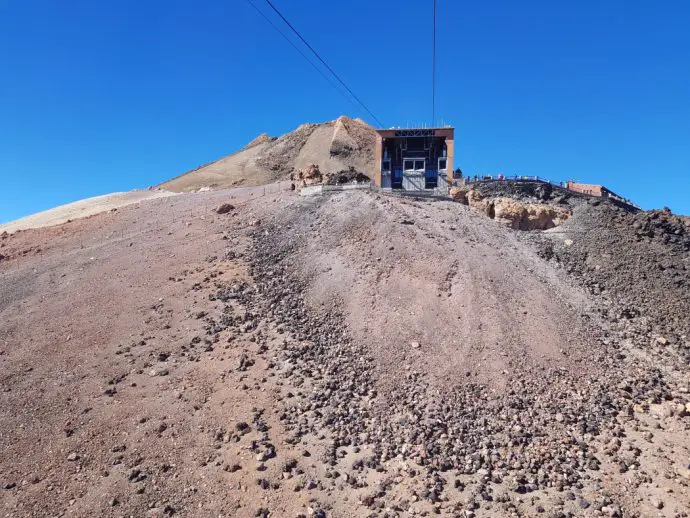
Mount Teide Hiking Trails
Once at the upper cable car station there are three hiking trails. The one to the crater rim (route 10) can only be done with a pre-booked permit, which is free but needs to be arranged well in advance as there are only a certain number allocated each day.
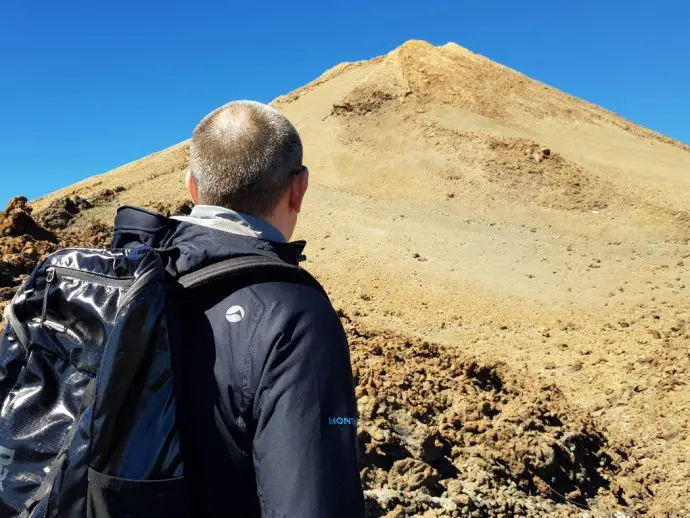
The other two trails (routes 11 and 12) are free, and each is about a 40 minute round trip to the respective view points. When we purchased our tickets it did say that you can only have an hour at the top, so we thought we’d only have time to do one trail. But when we got there it was all pretty relaxed, and no-one was checking times on our tickets, so we managed to do both trails.
Route 11 – La Fortaleza Viewpoint
The trail here is fairly flat, although uneven underfoot as it meanders through the lava field. Sturdy footwear is an absolute must, and even with hiking trainers on, I still managed to fall flat on my face, twisting my ankle in the process. Which was as embarrassing as it was painful!
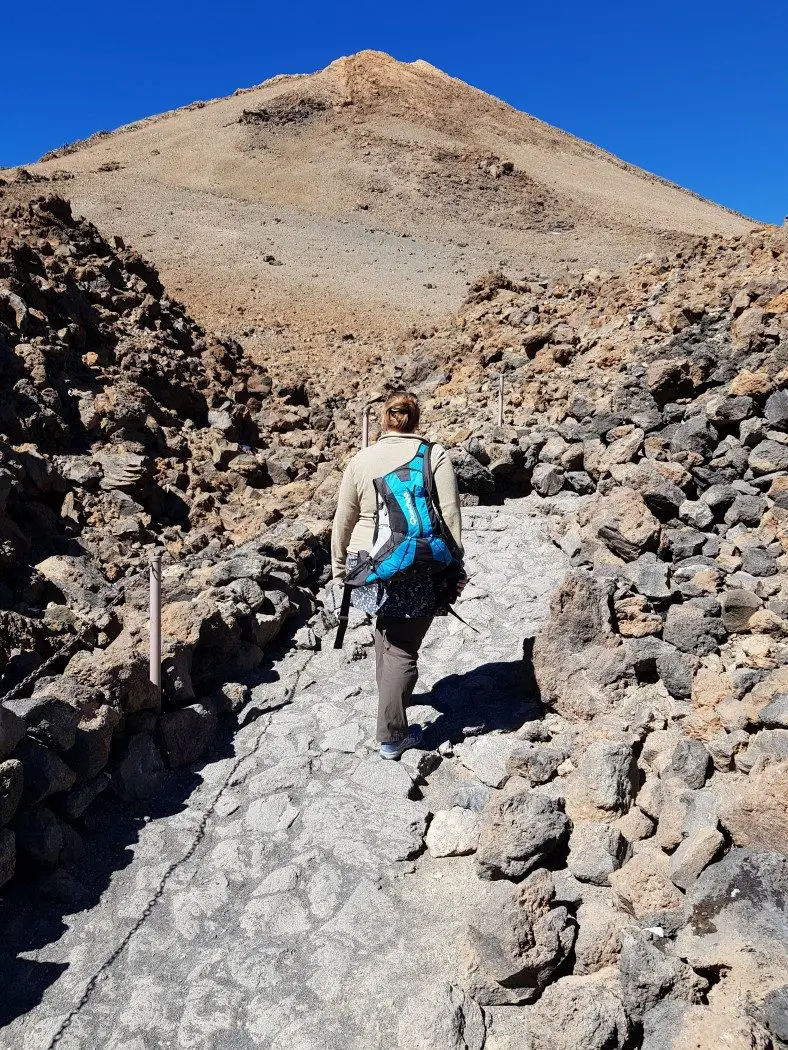
The viewpoint looks out towards the coast, which is sometimes hazy, and we thought it was less impressive than the viewpoint and scenery on the route 12 hike.
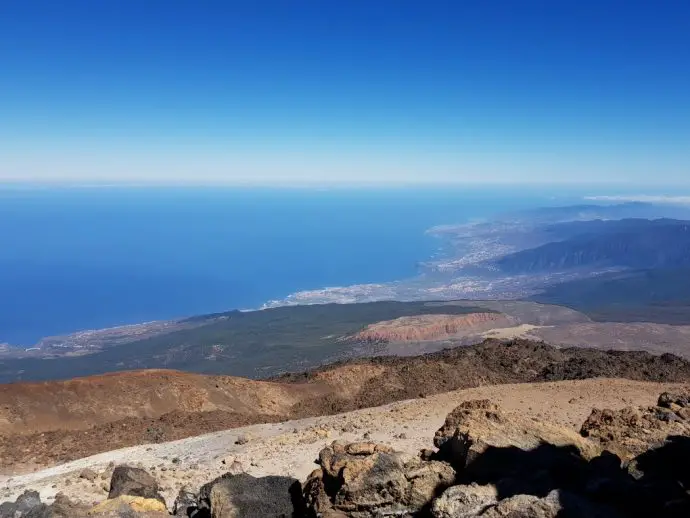
Route 12 – Pico Viejo Viewpoint
The viewpoint overlooking Pico Viejo is more dramatic than on route 11 above, but the path is a lot steeper in places and took us slightly longer, although the trail did seem less loose underfoot.
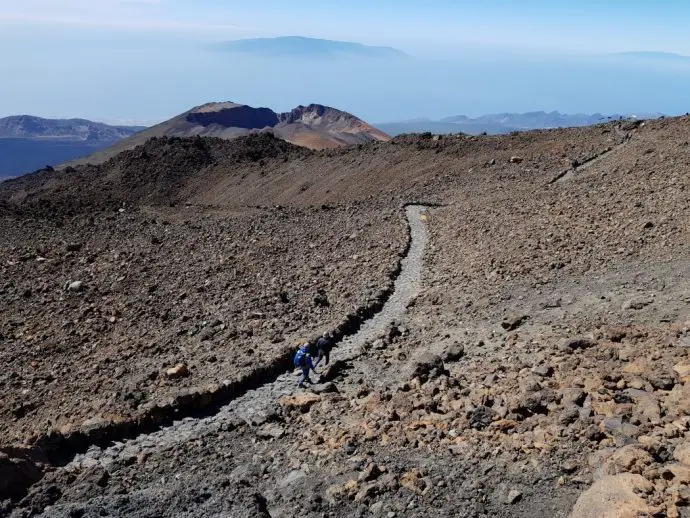
It’s mainly downhill on the way there, so it’s a bit of an uphill slog on the way back to the cable car station, which isn’t a joyous experience thanks to the altitude.
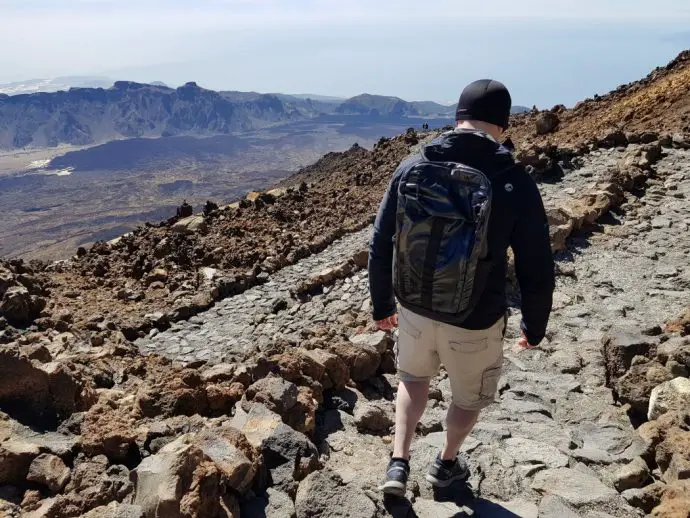
The viewpoint on this trail overlooks the multi-coloured crater of Pico Viejo. There’s a trail that descends the volcano from here, which if we’d have had time, would have been fun.
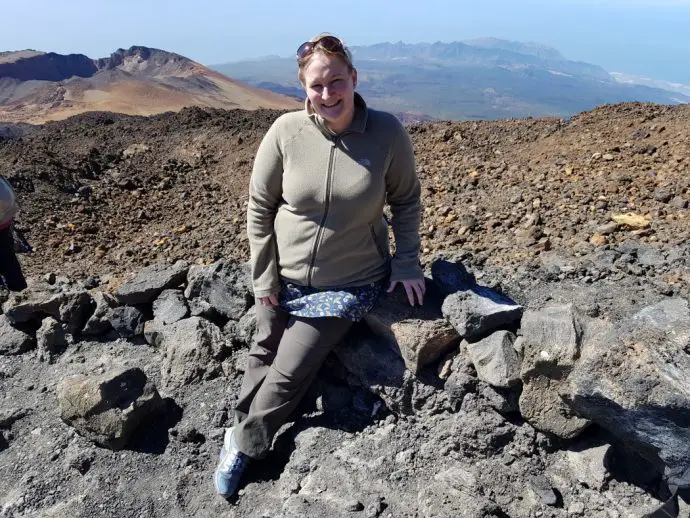
Altitude
Something you really need to be aware of here is the altitude. The upper cable car station is 3555m high, and ascending this way means you haven’t yet acclimatised. Although the trails weren’t particularly arduous, we found ourselves having to regularly stop to catch our breath, and were more than ready to travel back down after we’d done the walks. It took us several days to acclimatise when we went to Cusco in Peru, and that was lower than Mount Teide! The wind was freezing up here too, despite a cloudless sky and an intense sun, so we were glad we’d brought hats and jackets.
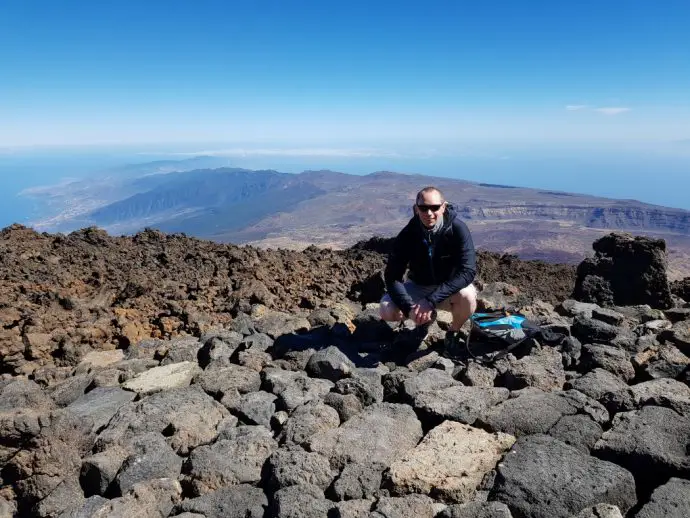
La Montaña Blanca
Back down in the caldera, La Montaña Blanca, one of the viewpoints just a few minutes drive further north of the cable car station is worth a mention for two reasons. Firstly, it’s jaw-droppingly beautiful, with sandy swathes surrounded by lava fields, overlooked by the dominating crater beyond. It’s also a popular place for picnics!
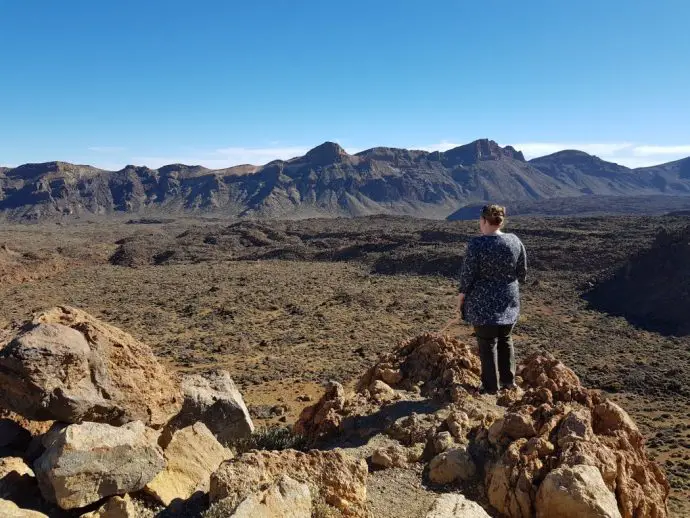
Secondly, this is where we had our hire car broken into, and our belongings stolen from the locked boot (including passports, cameras and money). Despite following all the rules of common sense, and only being away from the car for 5 minutes, it still happened. Apparently Teide National Park is notorious for this sort of theft, so please, if you’re out there, keep everything on your person at all times.
Read More: Tenerife didn’t steal our hearts, just our passports
Los Gigantes
If you’re staying on the south coast and heading to Masca, it makes sense to stop at the spectacular cliffs of Los Gigantes on the way. Found on the west coast of Tenerife in Teno Country Park, these giant cliffs (up to 600 metres high!) plunge down into the warm waters of the Atlantic below, and are known as one of the most spectacular natural sights on the island.
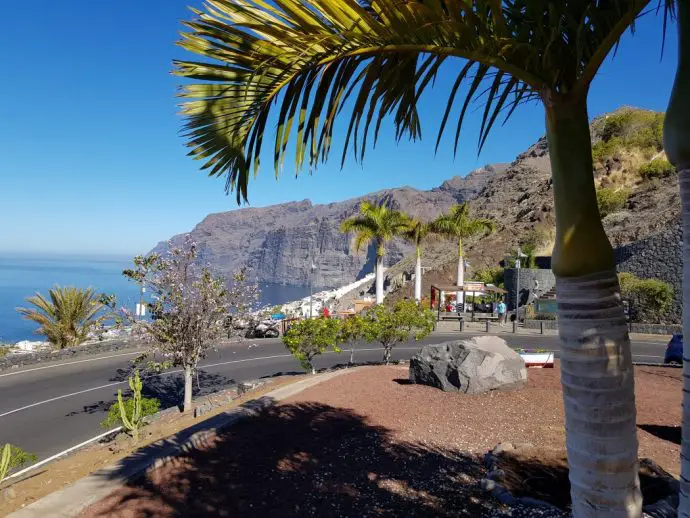
The town itself, named after the cliffs, has a laid-back 1970’s resort feel about it, and although parking is difficult (park at the top of town and walk down), it’s certainly worth a stop. Tenerife’s ancient Guanche population believed the cliffs to be a sacred site that indicated the edge of the world, and if you view Los Gigantes from a boat (whale and dolphin watching tours regularly visit the coastline here) you can truly understand why.
We didn’t have long to stop however since we were heading onwards to Masca, up and over those very cliffs we’d just seen!
Masca
Despite the majesty of Teide, I think Masca was the place that really got us gushing. We nearly didn’t bother with Masca. It had been billed as one of the top sights on Tenerife and we had visions of tour buses and crowds, and a once tranquil village destroyed by mass tourism. For once we were glad we didn’t follow our instincts.
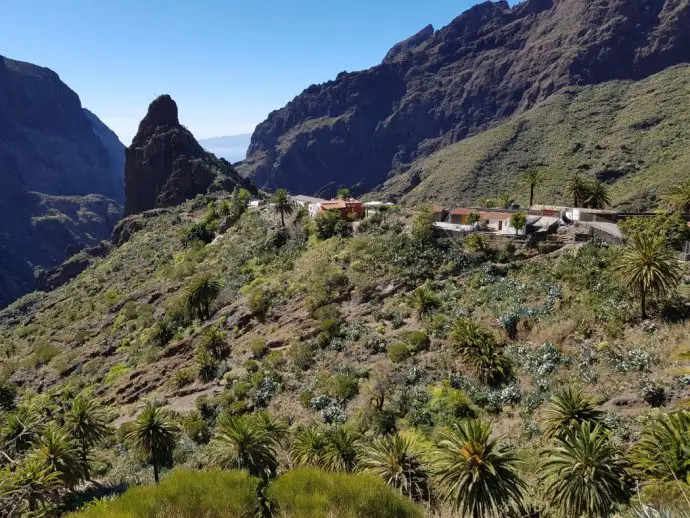
The drive up from Los Gigantes was steep, dramatic, and utterly breath-taking. The roads are narrow, and there are dozens and dozens of hairpins to negotiate, but once you’ve done a few you get the hang of it.
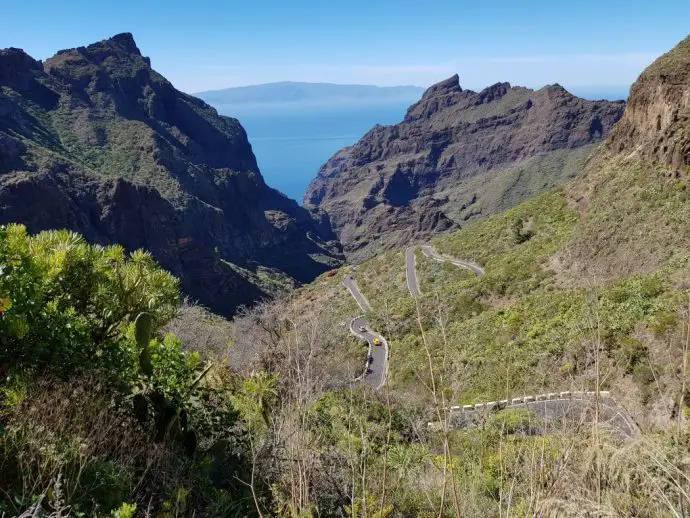
Although passing places are sometimes few and far between, the roads are in excellent condition, lined with concrete blocks to stop anyone spinning off into the ravines, so it felt quite safe despite the almost vertical drops.
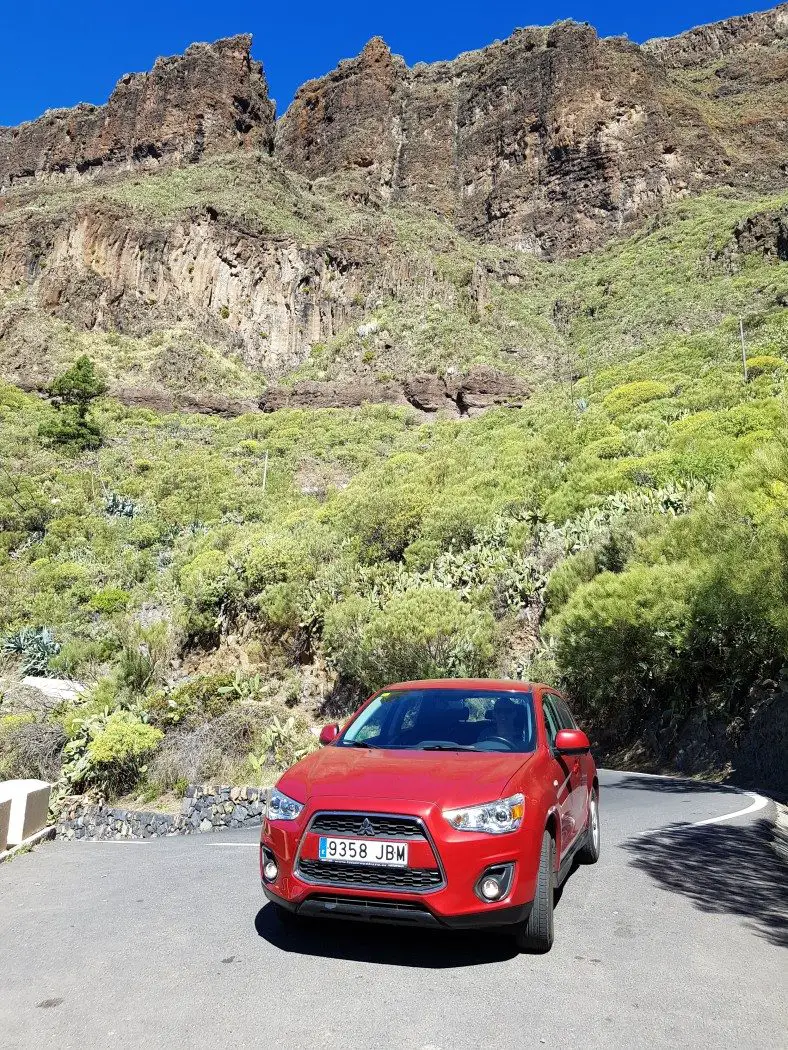
When we eventually reached Masca, we had to just stop for a few minutes and take it all in. Possibly one of the most beautiful places we’ve ever been to, and I don’t say that lightly.
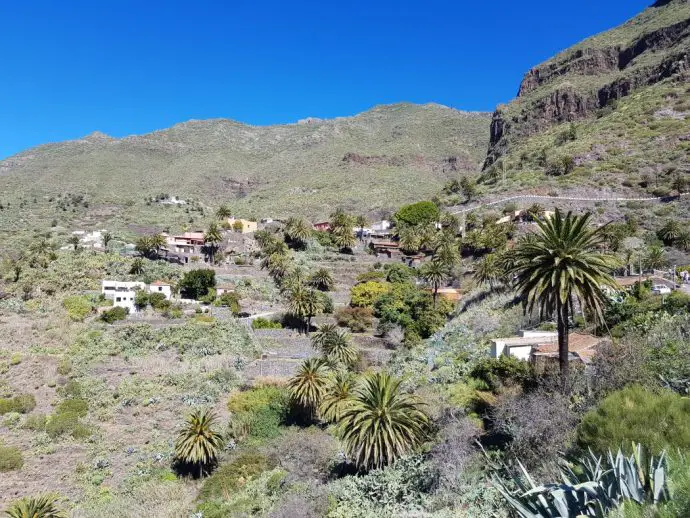
We found a parking place at the top and walked down into the village. There are two walking trails, one is direct and steep (there is a handrail), whilst the other is longer but more gentle (although with little shade). We opted to go down the steep path, and up the longer flatter one, which was a good choice in the heat, which was around 33°C.
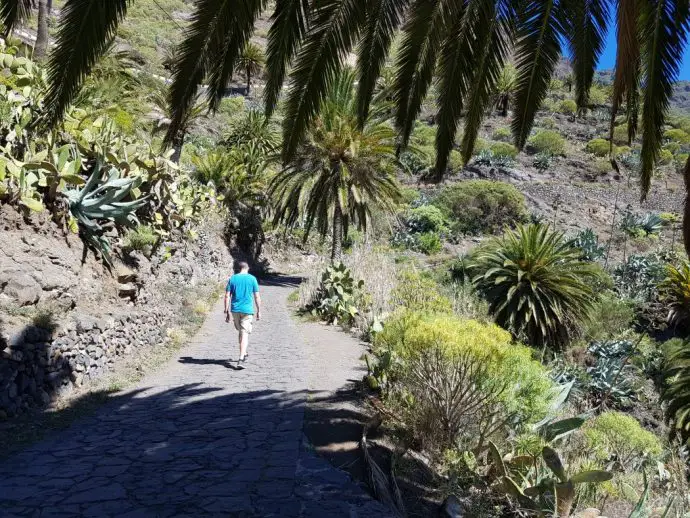
Masca is tucked away in a gorge in the heart of the glorious and wild Teno National Park. The village itself is an historic site, with traditional Canarian architecture and an 18th Century church which is so small it can only fit 8 people in at any one time. The village was also supposedly once a pirate hideaway, which we thought was rather cool. Although it’s a steep 3 hour hike down to Masca bay, so they’d have needed to be pretty fit pirates!
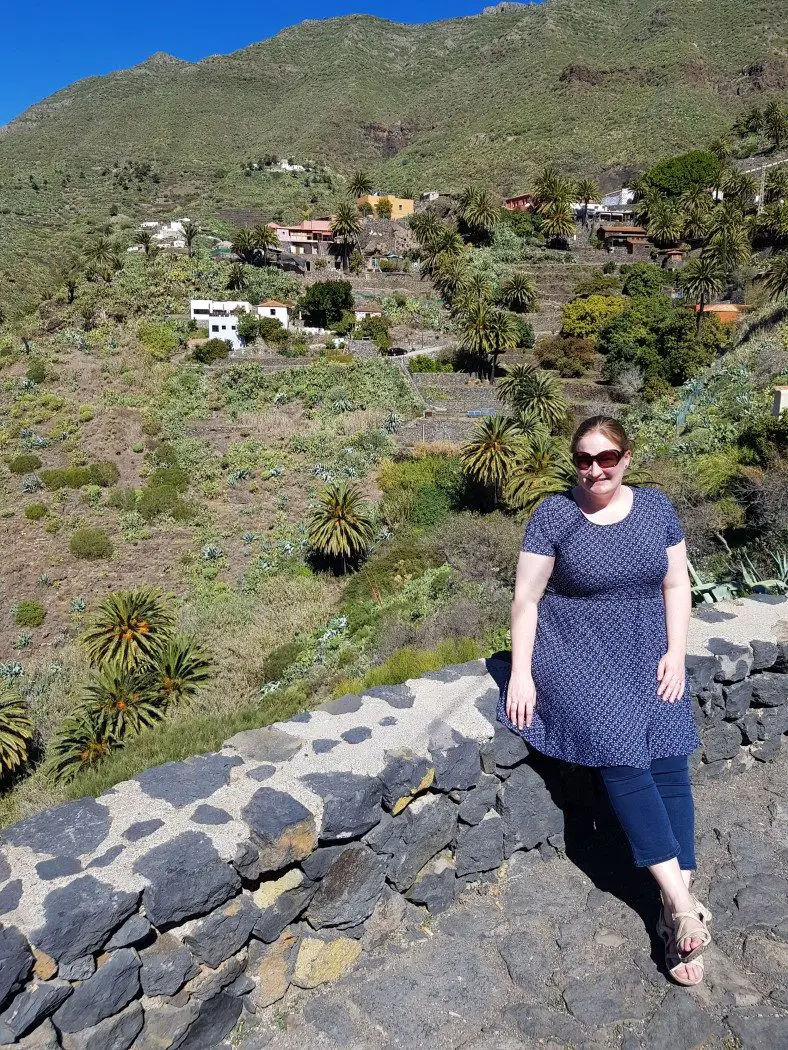
Surrounded by a deep gorge, lush vegetation and dramatic views, Masca was hands down our favourite place on Tenerife. The best times to visit are before 11am and after 5pm, to avoid the tour groups, but as with Teide, we were there around lunch time and really it was pretty quiet.
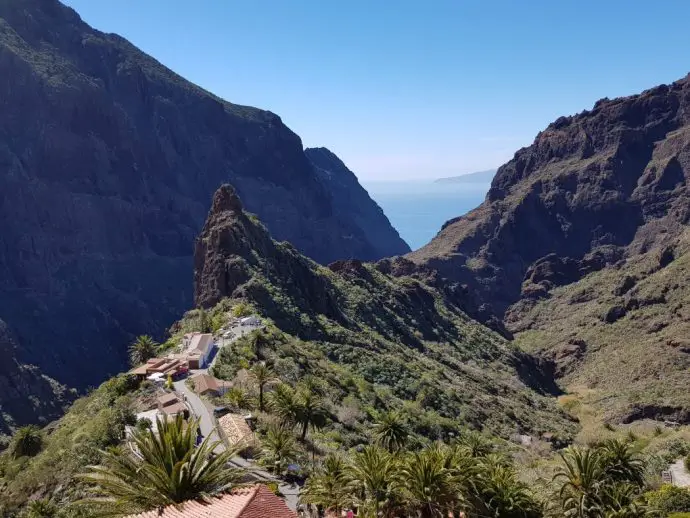
Garachico
Heading out of Masca and further up the coast we arrived in Garachico. It has to be one of the prettiest towns in the Canary Islands, with narrow cobbled streets, colourful colonial buildings draped in bougainvillea, and tranquil plazas where locals and visitors alike stop for an ice-cream, or a chat beneath the shade of palm trees. It’s the sort of place you could linger for quite some time, without doing very much.
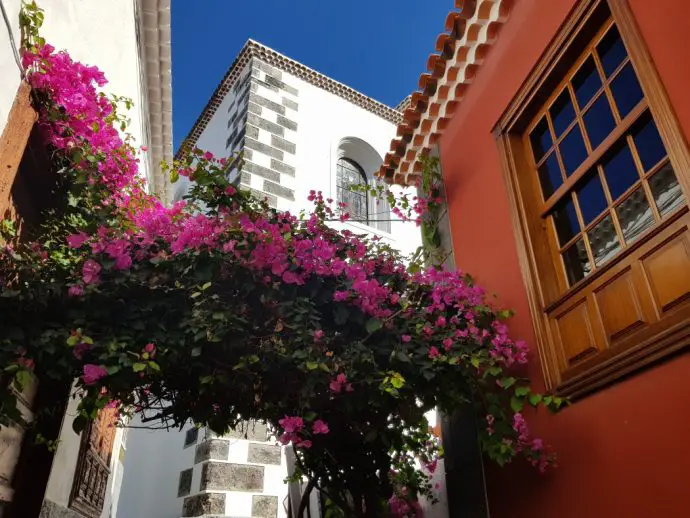
Garachico is comfortably nestled in a deep valley between forested slopes and the rocky western coastline, and has retained its Canarian identity with architectural heritage dating back to the 16th century.
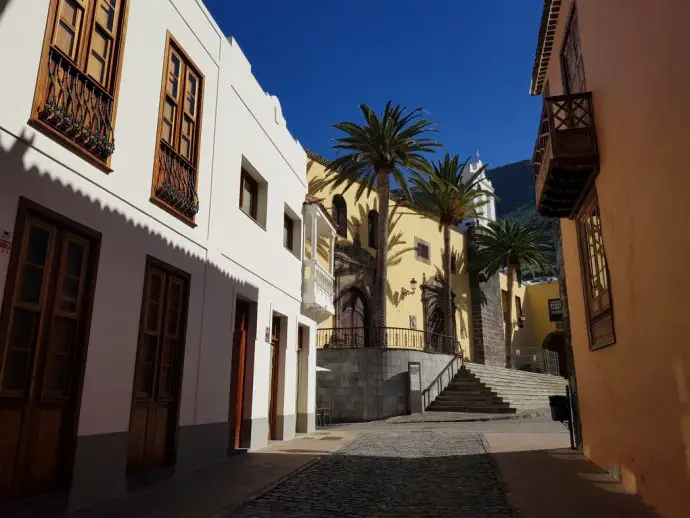
You can see the volcanic landscape all around, including the small black-sand beach (and actually the only beach we saw during our trip) on the edge of Garachico, which seemed popular with locals.
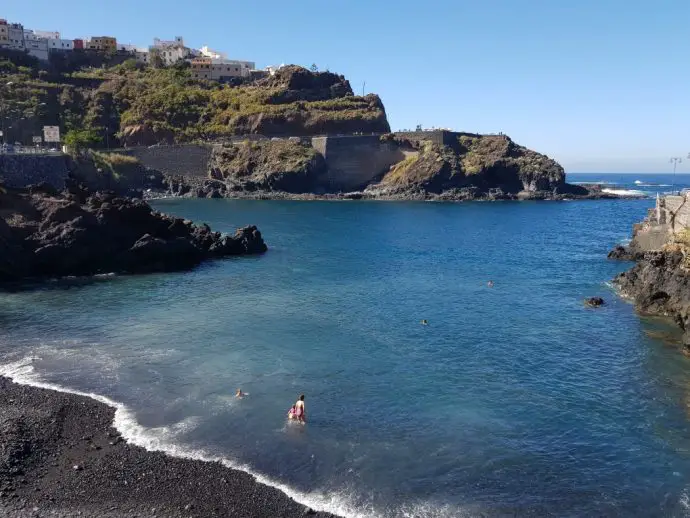
Garachico was once an important commercial port, with maritime connections in Europe, Africa and the Americas, until 1706 when lava from a volcanic eruption destroyed the port and buried half the town. The Castillo de San Miguel (the castle) survived and is now one of the oldest buildings in the area, which is also worth a quick visit.
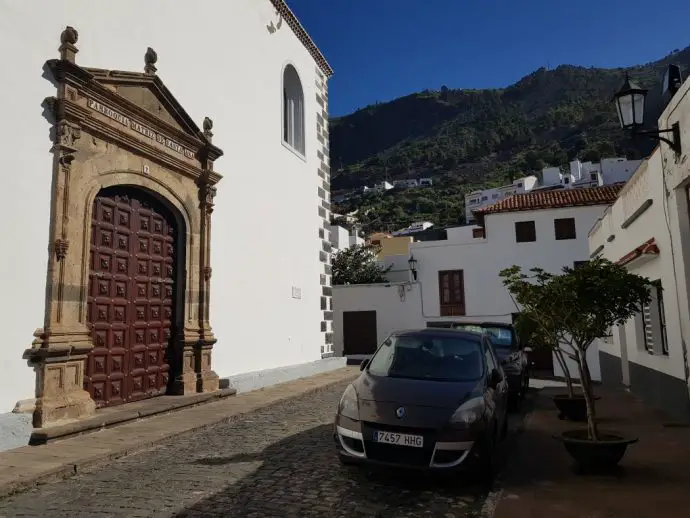
In the centre of the historical district lies the Plaza de la Libertad, which is bordered by churches and an old monastery. It’s a great place to hang out, absorb the atmosphere and cool down in the shade (it gets really hot here!).
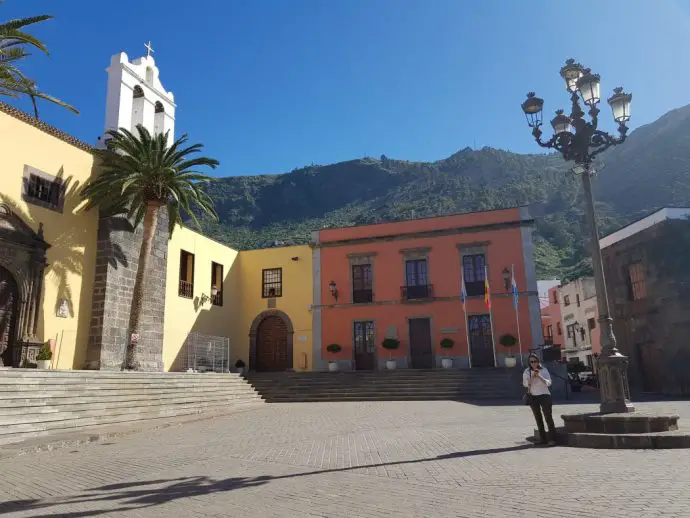
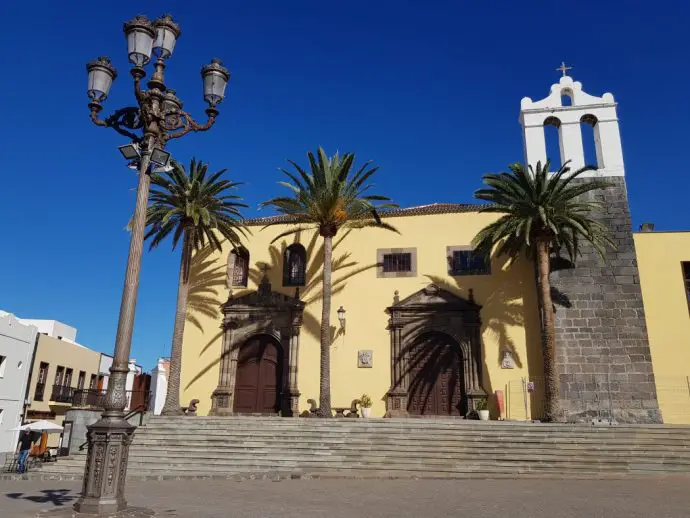
If you have time head down to the El Caleton natural pools for a refreshing dip if the tide is right. Created by the 1706 eruption, they are a popular spot where locals and tourists descend in the summer to swim. They were closed when we were there, so we’ll just have to go back again to check them out!
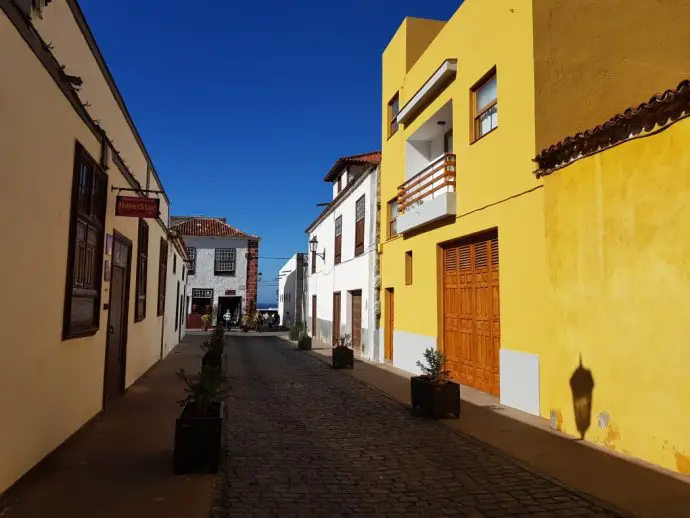
Where else to explore?
You can fit the above sights into 2 days, but if you have longer, then do check out the Pyramids of Guimar, the dragon tree of Icod, the architecture in La Orotava, and get even more off the beaten track in the mountains of Anaga in the far north. There are also banana plantations, dolphin and whale watching excursions and cooking classes to try, and if you really must, there are water parks, zoos and of course beaches. We felt we could’ve easily spent a couple of weeks in Tenerife and still have had things left to do, so make sure you give yourselves enough time. It may be an island, but Tenerife has the variety of an entire country when it comes to landscapes, and feels surprisingly remote and exotic once you get away from the coast.
So go and explore beyond the resorts, you won’t regret it!
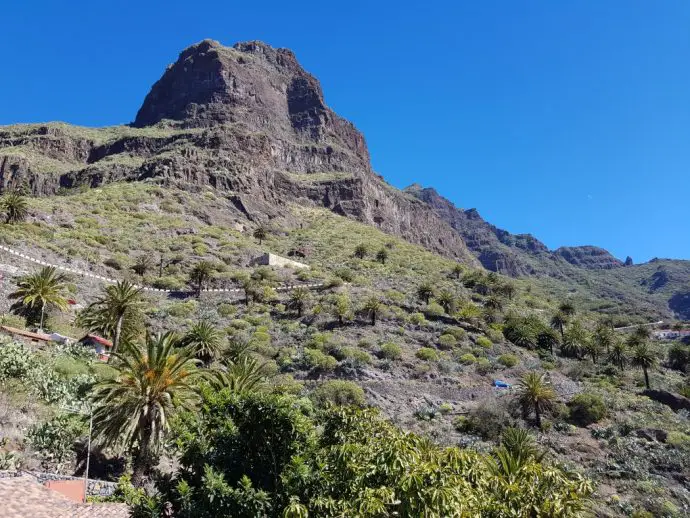
[separator type=”thin”]
Thanks to the wonderful folks at Jet2holidays for sending us out to Tenerife to experience something a bit different. We received flights, transfers, and half board accommodation in return for this review. As always, opinions remain entirely our own.
Found this post useful? Why not pin it for later…
